
Brake Buddy Stealth Supplemental Braking System - Proportional

Will this fit?
To see if this custom-fit item will work for you please tell us what vehicle you'll use it with.
Thank you! Your comment has been submitted successfully. You should be able to view your question/comment here within a few days.
Error submitting comment. Please try again momentarily.
- All Info
- Reviews (78)
- Q & A (0)
- Photos
Brake Buddy Tow Bar Braking Systems - HM39530
- Brake Systems
- Hydraulic Brakes
- Proportional System
- Brake Buddy
- Fixed System
- Power Assist Brake Compatible
- One Time Set-Up
Get fully proportional braking with a system that never has to be removed, replaced, or reset. Actuator installs out of sight and remains virtually invisible when your car isn't being towed. Controller also works as a trailer brake controller.
Features:
- Supplemental braking system applies towed vehicle's brakes in proportion to braking action of RV
- Towed car's brakes are activated at the same time and with the same intensity as those in your motorhome
- Sensitivity control lets you adjust rate of responsiveness of braking sensor
- Low sensitivity requires intense stopping action from RV to activate towed car's brakes
- High sensitivity allows towed car to respond to light braking action of RV
- 1-Time setup - no need to remove, reposition, or reset system
- Main unit installs in an out-of-the-way spot, such as in the trunk
- System automatically functions when RV and towed car are connected
- Controller with digital display mounts in your RV's cab
- Lets you easily adjust braking sensitivity
- Shows braking action and breakaway status
- Doubles as a proportional trailer brake controller
- Built-in battery protection keeps your towed vehicle's battery charged as you tow
- Main unit connects directly to your towed car's battery
- Vacuum pump restores your car's vacuum after each braking event
- Puts less strain on your towed car's brakes
- Ensures compatibility with hybrids and other continuous power-assist vehicles
- Low-profile, 7-way flat connector offers simple hookup and a clean look
- Built-in breakaway automatically activates towed vehicle's brakes if plug disconnects
- 4-Way vehicle-end plug connects to 4-way of tail light wiring kit (sold separately) on towed car
- Flex-Coil adapter lets you easily hook up your towed car to your RV
- Specially designed 7-flat connector plugs into the port installed at the front of your car
- 7-Way, blade-style connector plugs into your RV
- Nite-Glow connector lights up to confirm connection between your RV and vehicle
- Coiled cord won't drag on the ground
Specs:
- Actuator box dimensions: 14-1/2" long x 5-3/8" wide x 3-3/8" tall
- Controller dimensions: 3" wide x 5" long x 1-1/4" tall
- Power draw: 5 amps
- 5-Year warranty
A supplemental braking system is crucial when you tow a car or truck behind your RV. Without it, the weight of the towed car can create a safety hazard, strain your RV's brakes, or affect your RV's warranty. Most states require a supplemental braking system.
Automatic, Proportional Braking
Instead of being a time-delayed system, which brakes at a preset level, the Brake Buddy Stealth is a proportional system that delivers consistent braking. The Stealth will activate the brakes in your towed car with an intensity that matches the braking action of your RV. The result is smooth, even braking across your entire flat-tow setup.
Brake System Controller
The Brake Buddy Stealth controller mounts in the cab of your RV and functions like a proportional trailer brake controller. This means that the braking intensity of the system is based on your RV's deceleration. So, if you slam on the brakes in your RV, your towed car's brakes will activate with that same harsh intensity. And if you gradually slow down as you approach a red light, your car will steadily brake in the same light manner.

The above diagram shows the controls and components of the Stealth controller unit.
A. Mode indicator
B. Sensitivity adjustment button
C. Power level control buttons (trailer braking mode only)
D. Digital display
E. Test button (supplemental braking system mode) or manual override (trailer braking mode)
F. Mode control button
G. Mounting bracket slots
Internal Inertia Sensor
As long as the controller sits level on a horizontal plane and is pointed in the direction of travel, its internal inertia sensor will sense how your RV brakes and respond to the deceleration of your RV. It signals the actuator box to move the cable that attaches to your towed car's brake pedal so that the car's brakes activate with an intensity that matches your RV's braking.
Adjustable Sensitivity Settings
You can fine-tune the power output on the Stealth by adjusting the sensitivity of the internal sensor. Set the sensitivity low and the Stealth will only respond when you step down hard on your RV's brake pedal. Set the sensitivity high and it will respond even when you lightly tap your RV's brakes.
Use the adjustment buttons on the top of the controller to set your preferred level of braking intensity. Level 1 offers the least amount of sensitivity, making it ideal for lighter loads. Level 7, the highest level, provides the harshest braking. The heavier your load, the higher you will want to set the brake sensitivity.
Easy-to-Read Digital Display
On the front of the controller unit, there's a digital display that is designed to keep you informed about your towed car's braking action. This screen shows the braking sensitivity level, power level, and any error codes that might appear as you tow, such as a short circuit.
Mount Controller in Your RV's Cab
Mount the controller anywhere in your RV's cab that is within easy reach. It's recommended that the controller be mounted at an angle between -20 degrees and 70 degrees. Note: The Stealth controller must be mounted on a level horizontal (side-to-side) plane and must be lined up with the direction of travel for the internal sensor to function properly.
To install the controller, you will have to splice into your RV's wiring and connect the unit to your battery, stop light switch, and 7-way trailer connector. To do this, you will need some additional wiring and either a 20-amp circuit breaker or an in-line fuse. If you don't already have a 7-way trailer connector at the rear of your RV, you can use etrailer.com's exclusive 7- and 4-way brake control installation kit (ETBC7 - sold separately).
Trailer Brake Controller Functionality
The Stealth controller doesn't just work when you're towing a car. It also acts as a proportional trailer brake controller for when you're towing a trailer. Just press the mode control button on the side of the controller to switch from supplemental braking system mode to trailer braking mode. Then hook up your trailer to your RV. The Stealth controller works with trailers that have up to 4 axles (8 brake assemblies) and electric brakes.
When in trailer braking mode, the Stealth controller allows for the same smooth, proportional braking that you'll receive when you're towing your car. Slamming on your RV's brakes will signal your trailer to brake just as intensely. Steadily slowing down before a red light will signal your trailer's brakes to react just as gradually. Just set the initial power level, select your sensitivity setting, and you're ready to go.
Low-Profile, Semi-Permanent Installation
Some proportional braking systems are bulky, and they must be repositioned and reset before each use. And if you want to drive your towed vehicle, you need to remove the unit and find a place to stow it. With the Brake Buddy Stealth, a 1-time setup is all that's required, making it faster than ever to get your car ready to tow.
Actuator Box and Cable Pulley

The main actuator box installs in an out-of-the-way location in your vehicle, like in the trunk. The box's wiring connects to the 7-way flat connector that installs on the front of your towed vehicle. The black cable runs to the cable pulley system that installs on your car's brake pedal, so that the brakes can activate properly.

Because the installation is semi-permanent, you don't need to reactivate any parts when you're getting ready to tow, nor do you need to remove anything when you're done towing. The Brake Buddy Stealth can stay in your vehicle year-round. Once you're ready to tow again, just plug your towed car into your RV and the system will automatically begin functioning.
Exclusive Connector and Adapter Cord

The Brake Buddy Stealth uses a novel 7-way flat connector that mounts at the front of your towed vehicle. Unlike standard 7-way connectors, this low-profile socket stays out of sight when you're not towing. A dust cover is included to cover the connector when your vehicle is not connected to your RV.

All of the electrical functions that you need are built into this single connector.

The diagram above shows how the 7-way flat installs.
Wire 1 connects to your vehicle's battery.
Wire 2 connects to the vacuum pump included with the Stealth.
Wires 3, 4, and 6 connect to the corresponding, color-coded wires on the Stealth's main unit. These wires have quick-plug ends for simple plug-and-play connecting.
Wire 5 is the ground wire. (Note: A ground wire extends out from the main unit as well. Both the 7-way flat and main Stealth unit must be grounded.)
Typically when you wire your towed car to get the signal lights required for towing, you will run a 4-way to the front of the car. This 4-way then has to be connected to your RV with a separate loop every time you tow. But with the Stealth, a wiring harness with a 4-way flat, vehicle-end plug is built into the back of the included 7-flat connector so that you can just plug in your towed car's tail light wiring kit.

The Brake Buddy Stealth system includes a coiled adapter cord that connects to your RV's 7-way, blade-style socket on one end and to the 7-way flat socket that installs on your towed car at the other end. The RV-style plug has Nite-Glow technology, so it will illuminate when connected to confirm that the plug is receiving power from your RV.
The adapter cord also comes with a built-in breakaway cable. If the cord comes unplugged from your RV while you're towing, the Stealth system will enter breakaway mode and your towed vehicle's brakes will activate. Note: The dust cover must be inserted into the connector when the car is not being towed to prevent the Stealth from going into breakaway mode.
Vacuum Pump

For many cars, trucks, and SUVs, the vacuum-assist function of their brakes stops working when the engine is off. As a result, many supplemental braking systems have to apply an extreme amount of force to activate the towed vehicle's brakes when it's being flat towed. The Brake Buddy Stealth's vacuum pump is designed to restore the vacuum force in your towed car's brakes each time the brakes are activated. No need to have a system that exerts a large amount of force to bring your towed vehicle to a stop.
Install the included vacuum pump under your towed car's hood to ensure that its vacuum-assist brakes operate correctly while the car is being towed.
Note: If you have a vehicle that has continuous power-assist brakes, you do not need to install the vacuum pump.
39530 Break Buddy Stealth Fixed Proportional Towed Vehicle Braking System by Hopkins
Installation DetailsThis Product Fits The Following Vehicles
- 2010 - 2024 Ram 1500
- 2013 - 2018 Ram 1500 with adjustable pedals and with electronic shifter
- 2013 - 2018 Ram 1500 with adjustable pedals and without electronic shifter
- 2013 - 2018 Ram 1500 without adjustable pedals and with electronic shifter
- 2013 - 2018 Ram 1500 without adjustable pedals and without electronic shifter
- 2019 - 2024 Ram 1500 Classic with adjustable pedals and with electronic shifter
- 2019 - 2024 Ram 1500 Classic with adjustable pedals and without electronic shifter
- 2019 - 2024 Ram 1500 Classic without adjustable pedals and with electronic shifter
- 2019 - 2024 Ram 1500 Classic without adjustable pedals and without electronic shifter
- 2010 - 2012 Ram 2500
- 2013 - 2024 Ram 2500 with adjustable pedals
- 2013 - 2024 Ram 2500 without adjustable pedals
- 2010 - 2011 Mazda 3
- 2010 - 2012 Ram 3500
- 2013 - 2024 Ram 3500 with adjustable pedals
- 2013 - 2024 Ram 3500 without adjustable pedals
- 2012 - 2019 Fiat 500
- 2014 - 2016 Fiat 500L
- 2007 - 2019 GMC Acadia
- 2017 - 2017 GMC Acadia Limited
- 1999 - 2022 Hyundai Accent
- 1984 - 2020 Honda Accord
- 2006 - 2006 Honda Accord Hybrid - with rear heater
- 2006 - 2006 Honda Accord Hybrid - without rear heater
- 2006 - 2006 Honda Accord non-Hybrid - with rear heater
- 2006 - 2006 Honda Accord non-Hybrid - without rear heater
- 2007 - 2007 Honda Accord with rear heater
- 2007 - 2007 Honda Accord without rear heater
- 2007 - 2012 Nissan Altima
- 2006 - 2010 Nissan Armada See All Vehicle Fits
California residents: click here
Customer Satisfaction Score:
85% were satisfied with this product
15% of customers were not satisfied
- Wrong item was ordered
- Too difficult to install
- Product did not meet expectations
Customer Reviews
Brake Buddy Stealth Supplemental Braking System - Proportional - HM39530
Average Customer Rating: 4.2 out of 5 stars (78 Customer Reviews)
Get fully proportional braking with a system that never has to be removed, replaced, or reset. Actuator installs out of sight and remains virtually invisible when your car isn't being towed. Controller also works as a trailer brake controller.I am a proficient DIYer (and was an auto mechanic many years ago). The installation took a lot of time - perhaps 8-10 hours for the brake controller. The most special tool needed was a rotary cutter (e.g., a Dremel tool). A cordless impact driver was also very helpful, especially with the self tapping screws.
Getting the pully in the perfect position under the brake pedal took some trial-and-error to get perfect. Also, the included bolts for the brake pedal bracket where too short to accommodate the width of the brake lever - easily remedied with slightly longer standard bolts. Be very mindful of what is on the other side of the sheet metal you are planning to drill into.
The brake supplemental vacuum system was a bit of a challenge, as the instructions are very vague regarding how to mount, and the space I had to work with was surprisingly tight. I ended up creating a mount on the inside front fender, and bolting the pump to that. Also, tapping into the vacuum lines took a couple of tries to get a leak-free connection. Think ahead about this, and be prepared to get a few small parts like hose clamps or right-angle hose connectors. This would be a potential consideration for any vacuum boost added on any vacuum power-assist application with any controller.
I mounted the Brakebuddy main unit under the rear seat - that was a perfect location, and much better than the often suggested location under the driver's seat. I was very pleased with the installation result.
I paired this with a Nighthawk tow bar. Be warned that the tow bar's included cable will not be compatible with the Stealth, as the Brakebuddy uses a proprietary connection at the towed vehicle. The upside of this proprietary connector is that all connections are build in, including the brake away cable and the battery charging line.
(I modified the Nighthawk by replacing the included cable with a 4-pin cable to power the lighting system on the bar. This is just for extra safety and cool looks - I could have just not used the tow bar's included cable).
With 1,200 miles of towing behind us, I can say I am very pleased with the performance. I rarely notice any difference in braking effort or effectiveness - which is a big advantage for a proportional system. My favorite feature is the ease and speed of connecting or disconnecting the towed vehicle.
I'd give this a 4.5 stars out of five if I could, because I did need to add a few parts and make a couple trips to the hardware store to complete the installation. However, the excellent performance and ease of use once installed more than makes up for the inconvenience during initial installation.
Special appreciation to the people at eTrailer, especially Nicole T, who provided support and guidance from pre-sales to installation. Also, I called Brakebuddy's support line with a concern, and they immediately picked up the line, addressed my question, and offered to immediately ship any parts if needed.
I choose the Brake Buddy Stealth for my 2021 Jeep Wrangler because I wanted a “stay in place” brake system and felt it would be a clean looking installation. I finished the toad side of the installation today and thought I’d leave some notes on what turned out to be a bigger project than I’d anticipated. Again, this is my experience on the 2021 Jeep Wrangler 2-door. Your experience on other vehicles may vary.
I started this install after installing a Demco Tabless Base Plate. Right out of the blocks, there’s really no convenient location to mount the cable connector to the Demco baseplate. I chose to mount it to under side of the bumper on the driver’s side. To provide clearance and a route for the wires, I had to cut a notch into the plastic air dam. I used one of the already screw screw holes and used self tapping screws in the other three locations. For added strength I epoxied the connector to the bumper as well. Since the bumper would be unremovable if the connector were hardwired, I added a waterproof connector. The kit is stingy with wire lengths, so I substituted my own wire.
The Stealth unit itself i mounted beneath the driver’s seat. Don’t be fooled into believing there is clearance when testing with the driver’s seat positioned for rear seat access. Once the seat is returned to normal operation it lowers a bit and the box keeps the seat from being move forehand aft. I solved the problem by installing 5/8” thick nylon washers under the rear end of the seat slides. I also cut away a bit of the carpet under the front, inboard corner of the box. You will need to remove the driver’s seat in order to attach the front screws of the box. Be sure to disconnect and isolate the neutral battery terminals to prevent inadvertent air bag discharge. After removing the interior trim from the A-pillar, the door sill, and the driver side foot well, The wiring and cable tucked nicely away along with the OEM wiring and wiring for my taillights. I mounted the pulley horizontally behind the brake pedal.
Installing the vacuum pump was my biggest worry and challenge. Instructions are to zip tie it “somewhere”. That seemed pretty casual for a safety system. I chose, instead, to fabricate an aluminum bracket that attaches to the lip of the engine compartment and to the wheel well (this latter attachment point is necessary to keep the pump from vibrating).
Finally, the kit comes with 3/8” fittings to tap into the brake booster vacuum lines. The Jeep, however, uses 8mm nylon tubing. Brake Buddy, via etrailer.com, stated that the tubing would stretch and all would be good. Again, this felt casual for a safety system. Instead, I purchased an 8mm check valve and a 8-6-8mm barbed tee through Another online retailer to do the job right. I had to heat the Jeep tubing to fit even the 8mm tee, so the is no way the larger 3/8” fittings would have worked. See photo of my finished vacuum line installation.
Bottom line, it was a POA install, but looks great. Hopefully it will stop the Jeep when towing. I’ll find out soon. :D
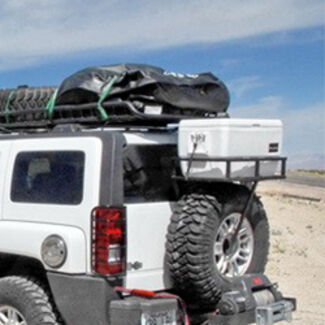
Jerry J.

1/24/2022
The Brake Buddy performed fine on all of our trips in 2021, including some mountainness terrain. We learned early, however, that the Stealth unit installed in the Jeep is temperature sensitive. On chill morn8ngs we need to start and run the Jeep with the heater at full blast for 5-10 minutes before setting out. Otherwise we get false breakaway signals in the cab controller. The connector on the Jeep side is also touchy resulting in turn signal failure notices on our motorhome dash. The manufacturer hasn’t been very sympathetic nor helpful with either issue. In short, we are able to use the system, I’d not recommend this product today.
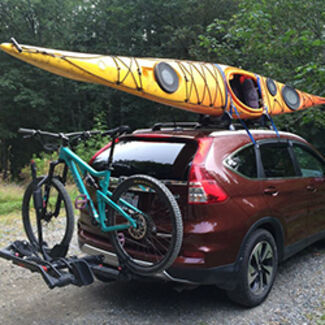
Tom M.
8/3/2022
Finally stable. The vehicle side connector is difficult to mount and quickly got corroded. The built-in trailer breakaway function did not fail but the wire that is used to send the signal to activate the brakes was very flakey. It caused several false breakaway signals in the RV. I also had trouble with the wire from the front of the RV but the vehicle mounted connector was the main problem. Eventually I moved the breakaway wire to the closed contacts of a relay and added a conventional breakaway switch. The relay is necessary because the supplemental brake system senses a breakaway when a circuit gets opened and the conventional switch makes a connection. Mounting the pulley under the brake pedal was a pain but no more so than with a different system I installed in a different car. Now that it is working I think it is a good system but if I do it again it will be a system that doesnt depend on a signal from the RV. A more serious hassle is the brake actuator cable. Make sure you mount the actuator box on a position that allows for the absolute straightest and shortest run of actuator cable. The longer it is, the straighter it has to be. Tech support was really awesome! This system is more sophisticated than others I have considered but that sophistication makes it harder to have a reliable system.

Installation was straightforward. It works great and does not drain battery since it has built in charging. This was an important aspect I was looking for in an installed system. Be sure to keep dielectric grease on connector so it does not inadvertently engage brake. Over 10,000 miles of flat towing with no problems.

The Brake Buddy has been working great. I just wish they had made the plug a more standard mount. It doesn't fit the standard mount point on my Roadmaster baseplate. I had to make a little bracket to adapt it.

Excellent non-obstrusive system. It is a fairly involved installation (took me a few evenings), but after is hands-off and very quick hook-up.
My one worry is the proprietary flat connector used for the electrical hookup at the front of vehicle. I've had a couple of times where the pins on the vehicle side have compressed enough to not make a full connection, including one time that triggered the emergency breakaway system. I've cleaned and tweaked it, and it's been stable the last few months. But I worry what happens if it has an issue and leaves us without a good connection and nowhere to get a replacement.
Even with that I would highly recommend this for someone looking for a hands-off braking system.

My brake buddy started applying itself, when not being towed. Leaving me in dangerous positions and holding up traffic. Contacting E trailer gave info contact information. However the company could not provide any trouble shooting information. There only help was telling me to pull fuse so that it would'nt activate. I had allready disconnected the cable at the brake pedal.
Installation in 2014 2-door Jeep Wrangler JK with manual transmission
The seat in my Jeep is very different from the pictures in installation videos. There is absolutely no way the main unit can go under the seat 'crosswise'. Additionally the heavy cross bar at the rar of the seat doesn't allow the unit to be positioned fore-aft without a bit of additional work.
I found that installing oriented for-aft running the cable under the carpet gently curving to the left and turning back to the pulley worked pretty well. It's using up some foot space for rear seat passengers, but we very rarely carry passengers so it works for us. There is a fairly large 'hump' in the floor under the unit. I screwed down the rear most tabs with some rubber washers underneath, and then used the longer self-tapping screws in the kit to attach the front tabs without creating any stress in the unit.. just a little snug does the job.
For most of the screws I used 3/4", the included 1" are much longer than necessary. Likely could have used 1/2" in most places.
So far it seems to work pretty well. I dropped a start mostly due to the documentation being a bit vague and poorly worded.
For example regarding testing when disconnected from the motorhome, the instructions seem to imply that you connect and then disconnect the dummy plug and it should apply brakes. When I tried that the unit indicates breakway (flashing green light), but did NOT apply brakes. After some fiddling around, I found that I needed to have the dummy plug installed, connect fuse (or disconnect for a few seconds and reconnect fuse) and THEN within 3 minutes pull the dummy plug. That's very different from the manual which states "may be tested by attachinga and removing the dust cap".
Installation manual specifies installing the pulley with the cable connection pointing down without any mention of other options. This is a bit disconcerting, videos of Jeep installs seem to always run the cable in from the left side. How is the end user to know if that's okay? Maybe it was okay when the videos were made, or the videos are wrong..etc. A brief mention that in cases where the cable can't be routed below the pulley, running it through the side/top..etc. is okay.
Lastly various areas of the documentation say to call, they are open 8AM - 5PM CST. I only found ONE mention that they are open Monday-Friday... it's a simple detail that should have been caught a long time ago. I expect technical documentation to be accurate.
The order was filled over a weekend when I ordered it and showed up before it's scheduled time. Everything was as I expected it after talking to ETrailer support before ordering. Thanks ETrailer another great experience.

John

10/30/2023
I have this system installed. It was fairly easy install. I had an issue with controller installed in my Motorhome it did not work properly but contacted manufacturer Hopkins support and they immediately sent new unit and it worked great.


Install was not that difficult. But I could never get it to work properly. The idea of the inertia sensing being on the sending unit in the coach was an issue. It was never able to be adjusted correctly. I could go for hundreds of miles without an issue but then when entering an on ramp or exiting a ramp the brakes on the car would lock and disengage then lock again. I would have to go five MPH for it to allow the car to not apply its brakes. Then it was fine for a day or two.
To be 100% fair I never really liked the tow vehicle, a 2023 Buick Encore that was the tow either. I have always had Jeep Grand Cherokees and setting them up to tow was simple. This Buick was a PIA to say the least. At least once every three or four days it would not start after five or six hours of towing. It had a charge wire but that didn't seem to do a lot of good. It needed a Knife brake switch on the ground post, which it had, yet it could and would turn on the radio or wipers all by itself, so the ground knife switch was being bypassed someplace. I had this car due to the motorhome I was using was a MB chassis. I was a Porsche Tech in my past life so settign this unit up should not have been this difficult.
I’m happy to say that motorhome is gone and replaced with a Diesel Pusher like I had before and the car is gone and replaced with a Jeep Grand Cherokee as well. I have gone back to an Airforce One unit, and all is well.
So was it the Brake Buddy that was the issue or was it the Buick. In either case they do not go together very well.
Are we sending this car to the moon?
What is with the overengineered crap you are sending me and on top of that you are sending me another cable set for my lights hookup?
$[XX]+ later for the overengineered brake buddy which has electronics which WILL break sooner than later.
I asked for a NON electronic supplemental braking system.
Just where is all this junk going to be fitted ? AND what am I going to do with ALL the extra wiring you sent?
What is it going to cost to install this???….or is it a matter of “he has an RV, he must be loaded!” I am not and definitely not after this!
And I specifically asked for a kit that will not break the bank.
I am definitely not happy with this. You can expect my returning this “brake buddy”
There are simpler ways to stop a car.


Brooke M.
4/11/2023
I hear you, these can be pretty labor intensive to install. The perk to this part is that once it is installed, it is a one and done deal.

Please ket me know if the control module can be installed, so that it is not always drawing battery power?.
When in storage, or parked.... there is No way to turn unit off without disconnecting the battery cables under hood. Terrible inconvenience to have to go through this!? What about an on/off switch? I like the unit, but not the fact that it constantly drains my battery! Help???

Horrible product, would not ever buy again. This product is much more complicated than it needs to be. It is subject to the poor workmanship of the RV dealer mechanics. Do NOT buy.

Works great but it took some time & effort to install. Hooking up to RV is easy and has been good - except when I forget to replace the wire harness cover for the car.

Helen in customer service is great, very knowledgeable and helpful. She set me up with a Road Master Nighthawk tow bar, I have used it multiple times and it works great!
Paul was fantastic in getting me what I needed.

Installing was a bit time consuming I installed behind the drivers seat on a GMC canyon extended cab. It was a tight fit and O added a bolt to the slide rail of the seat adjustment so the seat wont hit the controller. there seems to be a sequence when connecting the tow vehicle as some times the light is in error mode and I have to reset it to be active. As for stopping the tow vehicle I have no idea as I can't tell its back there anyway. 4 stars is because I have to reset it once in a while.

Great item but the vacuum pump provided is inadequate, especially if you often deal with mountain passes or other travel that requires more than an occasional single brake application. We upgraded the vacuum pump and now the system is awesome - easily the best we've ever had.

Works great, completely satisfied with these!
Love that the Brake Buddy is out of the way when installed in our Rubicon. We don't even notice it until we need it. It was straight forward to install the system; just follow the included instructions and all parts needed were in the kit. We installed our unit behind the driver's seat against the sidewall. It fit there and doesn't take up much room. We put a piece of interior carpet on the top for an armrest. It brakes perfectly, when needed.
Brake Buddy arrived with 2 missing parts. Contacted manufacturer and got parts 2 weeks later. Plastic "T" fitting broke, and installer had to improvise using a brass fitting rather than wait for a replacement part that isn't durable anyway.
To date I have been unable to see how the system works. Unknown to me it will only work with the Brake controller they send with the unit. Now I have to uninstall the built in factory unit out of my Ford, and install theirs under dash. This is not only annoying but I'll have two controllers to confuse anyone other than me,, and have received no call backs from [Brake buddy] tech support with any other options.


Sierra K.
11/8/2021
I spoke with Hopkins and they confirmed that the Brake Buddy Stealth # HM39530 can only be used with the included brake controller.
Helpful Links

I installed the break buddy in my 06 Suzuki Grand Vitara. I was looking for a way to get braking when I flat tow the Suzuki but would be unobtrusive when I am just driving around. The break buddy was the answer. Except for the clamp above the break pedal I would not be able to tell it is installed but when we pull the Suzuki, I have lights and breaks.

This system, when sorted, works pretty well. It's also extremely easy to hook up and go, requiring none of the traditional nonsense associated with braking systems. Their all-in-one connector is excellent, and really works well. That said, it's been a long road (over a month) to get it installed and at a point where it safely stops the towed car.
June 9: I ordered the Brake Buddy Stealth kit for my 2017 GMC Acadia V6.
July 5: I set about installing the kit, and realized that I was missing the harness and umbilical from what appeared to be an open box item. Called Hopkins tech support, and they stepped up and sent replacement parts for what was probably an unscrupulous customer's swindle. Kudos!
July 12: Install attempt round two. This time the install is successful, however, the controller that mounts in the towed vehicle is acting like it's fried. I called tech support and again, Hopkins stepped up and sent a replacement controller.
July 18: Receive controller and install. Appears to have fixed the problem. But now, the brake pedal is only pulling in a quarter of an inch when testing breakaway or trying to actuate it with the test button on the controller. I called tech support again and determined it's a bad main unit. I ordered a whole new kit, figuring I'll get good parts from one kit and send back the bad parts.
July 21: New kit arrived. I replaced the main unit and it changed nothing. Start advanced troubleshooting. Check voltages at the main unit under varying conditions - everything checks out. Detach the cable from the brake pedal and determine that the thing actually does stroke about four inches. Turns out the overload protection in the main unit is functioning as intended because too much effort is required to move the pedal. I test the vacuum pump and it's working as designed.
I then moved the cable attachment point to the very bottom of the brake pedal for leverage. This isn't what was shown in the instructions, but I was able to make it work and it did help - brake now moved about 2 inches. Then I tried testing it with the towed car idling (to provide good vacuum) and found that the pedal would move about 4 inches before the protection overload would stop it. The conclusion - not enough vacuum.
I tested the car's booster line with a vacuum gauge while running, and noted that it was pulling 25 inches of mercury (inhg). Tested the vacuum with the pump doing the work (engine off), and found that it would kick on at 10inhg and shut off at 15inhg. So the reason the system only works when the car is running is because the supplied vacuum pump is inadequate, providing ~10 less inches of vacuum than the car needs for proper booster operation.
Then I did some research on the Dorman vacuum pump in the kit. It's used in Ford trucks to provide accessory vacuum when starting the car for stuff like the AC controls. It's really not intended for something as significant and critical as braking. In any event, I took it apart and found that I had some wiggle room on the thresholds. I adjusted the contacts in the vacuum switch, and got it to the point where it would kick on at 15inhg and run it up to about 20inhg. Reinstalled the pump and took the car for a tow test, and it worked pretty well for well spaced braking events.
However, the vacuum pump ran every time I pressed the brake, and did so for 90-120 seconds. That wasn't going to cut it for multiple braking events within a one to two minute period (think traffic). Also, it sounded like it was working really hard to build 20inhg, and I suspected that it wouldn't be lasting very long. If it were to fail, I wouldn't have towed car braking, and that's no good since I'm taking my wife and four little kids on a cross country trip next month.
So rather than start over, I set about fixing the vacuum deficit at the beginning of August. For around a hundred bucks, I was able to get a Volvo brake booster vacuum pump and a multicomp vacuum switch (search [online vendor]). I made a mounting plate and used these two pieces with a relay to power the pump directly from the battery (picture attached). The result is that I can maintain vacuum between 19-23 inches, and the system now seems to work great. This vacuum pump is far superior, and only runs for about ten seconds between braking events.
Despite the fact that I'm good to go now, the vacuum pump included with the kit is sub-par and is now sitting in my parts bin. I contacted Hopkins with all of this information, and while they were responsive and helpful throughout this adventure, their engineers' final determination was that the provided vacuum pump should get the job done. That may be true for a Honda Civic, but in practice (and in fact) is was not adequate for my Acadia. In other words, unless you're really technically competent, I'd consider other options.

The design concept is great but I have had a couple problems. I have not yet contacted the manufacturer. It has acted like a breakaway situation after disconnecting the cable even though I put the cap on the jack i.e. the brake pedal stays active.
Sometimes when driving the toad it loses vacuum assist. I tried putting in a check valve in the line from the vacuum pump but that did not help. I disconnected that vacuum line and capped the tee and did not experience loss of vacuum assist. I reconnected the line to the vacuum pump had trouble twice but after a fair amount of driving, did not have trouble again. Mostly the problem occurs when first putting the car in gear after starting the engine.
TIP FOR ALL TOAD TOWERS:
I mounted a bright red LED strip to the front of the toad and wired it to the actual brake light switch in the toad. The light allows me to use the RV's backup camera to confirm whether the brake pedal is getting activated and released properly. Unfortunately, I have not had a chance to road test that. (Use a switch or quick disconnect so that it can be disabled for regular driving.)
This system, when sorted, works pretty well. It's also extremely easy to hook up and go, requiring none of the traditional nonsense associated with braking systems. Their all-in-one connector is excellent, and really works well. That said, it's been a long road (over a month) to get it installed and at a point where it safely stops the towed car.
June 9: I ordered the Brake Buddy Stealth kit from eTrailer for my 2017 GMC Acadia V6.
July 5: I set about installing the kit, and realized that I was missing the harness and umbilical from what appeared to be an open box item. eTrailer stepped up and sent replacement parts for what was probably an unscrupulous customer's swindle. Kudos!
July 12: Install attempt round two. This time the install is successful, however, the controller that mounts in the towed vehicle is acting like it's fried. I called tech support and again, eTrailer stepped up and sent a replacement controller.
July 18: Receive controller and install. Appears to have fixed the problem. But now, the brake pedal is only pulling in a quarter of an inch when testing breakaway or trying to actuate it with the test button on the controller. I called tech support again and determined it's a bad main unit. I ordered a whole new kit from eTrailer next day air. I figure I'll get good parts from one kit and send back the bad parts.
July 21: New kit arrived. I replaced the main unit and it changed nothing. Start advanced troubleshooting. Check voltages at the main unit under varying conditions - everything checks out. Detach the cable from the brake pedal and determine that the thing actually does stroke about four inches. Turns out the overload protection in the main unit is functioning as intended because too much effort is required to move the pedal. I test the vacuum pump and it's working as designed.
I then moved the cable attachment point to the very bottom of the brake pedal for leverage. This isn't what was shown in the instructions, but I was able to make it work and it did help - brake now moved about 2 inches. Then I tried testing it with the towed car idling (to provide good vacuum) and found that the pedal would move about 4 inches before the protection overload would stop it. The conclusion - not enough vacuum.
I tested the car's booster line with a vacuum gauge while running, and noted that it was pulling 25 inches of mercury (inhg). Tested the vacuum with the pump doing the work (engine off), and found that it would kick on at 10inhg and shut off at 15inhg. So the reason the system only works when the car is running is because the supplied vacuum pump is inadequate, providing ~10 less inches of vacuum than the car needs for proper booster operation.
Then I did some research on the Dorman vacuum pump in the kit. It's used in Ford trucks to provide accessory vacuum when starting the car for stuff like the AC controls. It's really not intended for something as significant and critical as braking. In any event, I took it apart and found that I had some wiggle room on the thresholds. I adjusted the contacts in the vacuum switch, and got it to the point where it would kick on at 15inhg and run it up to about 20inhg. Reinstalled the pump and took the car for a tow test, and it worked pretty well for well spaced braking events.
However, the vacuum pump ran every time I pressed the brake, and did so for 90-120 seconds. That wasn't going to cut it for multiple braking events within a one to two minute period (think traffic). Also, it sounded like it was working really hard to build 20inhg, and I suspected that it wouldn't be lasting very long. If it were to fail, I wouldn't have towed car braking, and that's no good since I'm taking my wife and four little kids on a cross country trip next month.
So rather than start over, I set about fixing the vacuum deficit. For around a hundred bucks, I was able to get a Volvo brake booster vacuum pump and a multicomp vacuum switch (search Amazon). I made a mounting plate and used these two pieces with a relay to power the pump directly from the battery (picture attached). The result is that I can maintain vacuum between 19-23 inches, and the system now seems to work great. This vacuum pump is far superior, and only runs for about ten seconds between braking events.
Despite the fact that I'm good to go now, I feel like the vacuum pump included with the kit is sub-par. I contacted Hopkins with all of this information, and while responsive and helpful, their final determination from "the engineers" was that the provided vacuum pump should get the job done. That may be true for a Honda Civic, but in practice (and in fact) is was not adequate for my Acadia. In other words, unless you're really technically competent, I'd consider other options.
See what our Experts say about this Brake Buddy Tow Bar Braking Systems
- Brake Buddy Stealth Supplemental Braking System 2020 Jeep WranglerFrom what you describe I suggest the Brake Buddy Stealth Supplemental Braking System, # HM39530. This is a proportional brake control system. That applies the towed jeep's brakes when activated at the same time and with the same intensity as those in your tow vehicle. This is a 1-Time setup, no need to remove, reposition, or reset system as the main unit installs in an out-of-the-way spot and automatically functions when tow vehicle and Jeep are connected. This will have it's own brake...
view full answer... - How To Fine Tune The Brake Sensitivity Of The Brake Buddy Stealth Brake ControllerThere is no set number for vehicles therefore the way to fine-tune the sensitivity of the controller is to put it at the 50 percent mark and then, in an open area, test the brakes by driving forward at about 25 mph and applying the brakes. If the vehicle stops too slowly, increase the maximum output. If it stops too abruptly or locks up, reduce the output.
view full answer... - Brake Buddy Braking System That Fits A 2021 Jeep Wrangler The only Brake Buddy system we have that fits your 2021 Jeep Wrangler is the Brake Buddy Stealth Supplemental Braking System # HM39530.
view full answer... - Is Brake Buddy Stealth HM39530 Current VersionThe version of the Brake Buddy Stealth part # HM39530 we offer is the most current version. What you'd receive has the easily removed plug.
view full answer... - Troubleshooting A Brake Buddy Stealth Brake Test That Isn't Activating The Brakes If the dust cap has been on the Brake Buddy Stealth # HM39530 7-way connector for a continuous three minutes it basically disables the system because it thinks you're going to be driving the towed vehicle. If you connect to the motorhome again and power on the unit and then remove the 7-way cable and install the dust cap and then remove it the brakes should apply. If this isn't the case for you and the brake test still isn't working then let me know and we can keep troubleshooting further.
view full answer... - Brake Buddy Stealth Supplemental Braking System Breakaway Feature In the event of a breakaway the Brake Buddy Stealth Supplemental Braking System - Proportional Item # HM39530 will automatically engage your vehicle's brakes to help you safely stop the motorhome and vehicle and pull over.
view full answer... - Brake Buddy Stealth Compatibility With Prodigy Brake ControllerI spoke with Hopkins and they confirmed that the Brake Buddy Stealth # HM39530 can only be used with the included brake controller.
view full answer... - Troubleshooting 2021 Jeep Gladiator Dead Battery with Brake Buddy Stealth InstalledThe Brake Buddy Stealth Supplemental Braking System # HM39530 that's installed on your 2021 Jeep Gladiator has a built-in battery protection that helps to keep the battery on your Gladiator charged as you're towing so you definitely shouldn't be having this issue. I would start off by checking the connection to your battery as well as all the wiring from the all in one connector back to the main unit. Make sure that everything is securely connected and nothing has damaged the wiring or...
view full answer... - Does the Battery Maintainer Only Operate When the Vacuum is Active Since They are Wired TogetherYou are correct that when wiring the Brake Buddy Stealth Supplemental Braking System # HM39530, the red wire from the vacuum pump and the black wire from the battery maintainer will connect to the same wire on the all-in-one connector. But this does not impact the performance of the battery maintainer/charger. The vacuum pump wire and battery maintainer wire are both drawing power from that one wire on the all-in-one connector, but they are not intertwined in the sense that that battery...
view full answer... - Will Brake Buddy Stealth Fit Vacuum Line of 2021 Jeep WranglerBrake Buddy has confirmed that the Stealth part # HM39530 is a fit for your 2021 Jeep Wrangler and that the vacuum line will stretch adequately fit and perform fine. A difference of .06 of an inch would not be an issue. The hose would easily stretch to fit that.
view full answer... - Dimensions Of Main Unit Of Brake Buddy Stealth Supplemental Braking System In 2020 Chevy SilveradoThe Brake Buddy Stealth Supplemental Braking System part # HM39530 is a nice supplemental braking choice for the 2020 Chevy Silverado. The main unit box measures 14"L X 5-3/8" W X 3-3/8" H. This should help give you an idea of where you would like to position it out of sight. The suggested mounting locations are under the seat or in the trunk. The controller is 3" W X 5" L X 1-1/4" H. The cable from the main unit to the brake pedal is 11-1/2 feet so you will not have any issues installing...
view full answer... - Troubleshooting Issues With A Brake Buddy Stealth Supplemental Braking Systems If you already trimmed the excess cable off when installing the Brake Buddy Stealth Supplemental Braking System - Proportional Item # HM39530 you might not have enough to add more slack to the line. Around the 8 minute mark of the attached video David explains installing the cable and adjusting it to the correct length. The cable being too tight would cause your issues with the hard braking. The issues with proportional braking can be attributed to the controller not being mounted at...
view full answer... - Brake Buddy Stealth Supplemental Braking System, Proportional for 2019 Jeep CherokeeYes, I suggest the Brake Buddy Stealth Supplemental Braking System - Proportional, # HM39530. This too is a a proportional braking system that remains in the Jeep same as the Demco. It is an equivalent product to other originally recommended from a different, but very reputable company. See the attached link for a product review and installation video of this product on a Jeep Wrangler.
view full answer... - Brake Buddy Stealth Supplemental Braking SystemFor the Brake Buddy Stealth Supplemental Braking System, # HM39530, I assume the length of cable you are asking about the red cable that makes electrical connections between the tow vehicle and towed. The overall length fully extended (Safely) is 73 inches.
view full answer... - Attaching Break Buddy to Vacuum Lines of 2005 Jeep Liberty You would not need a second check valve. You'd just need to install the check valve of the Break Buddy # HM39530 in the main vacuum line before the Y-fitting that splits the lines off into two lines.
view full answer... - Where Should Power Source for Brake Buddy Stealth Connect toYou should run the power of the Brake Buddy Stealth Supplemental Braking System # HM39530 to the battery like the instructions recommend so that it will always be powered regardless of what circuit you might deactivate.
view full answer... - Do You Have a Replacement Cable for the Brake Buddy Stealth Supplemental Braking System? No, I am sorry I can not help you John. The steel cable you're needing isn't available. It connects inside the Brake Buddy Stealth Supplemental Braking System item # HM39530 so Hopkins does not offer a replacement.
view full answer... - Troubleshooting Little to No Power on Brake Buddy Stealth Supplemental Braking SystemThanks for reaching out about the Brake Buddy Stealth Supplemental Braking System # HM39530. The Stealth is a bit of a different animal when it comes to the supplemental braking family but I have some things for you to check. Since the pump is not vacuuming the brake lines you'll want to make sure you are getting power to the vacuum pump when the towed vehicle is plugged into the RV. You also need to make sure the sensitivity is turned up. If it's on a 1-3 then you'll need some pretty...
view full answer... - Is It Normal For The Brake Buddy Stealth Controller's Mode Indicator Light To Remain On As long as the in-cab controller of the Brake Buddy Stealth Supplemental Braking System # HM39530 has power the mode indicator light will remain on. The power draw of this light is so low that it would take a considerable amount of time for it to drain the battery.
view full answer... - Towed Vehicle Wiring Kit For Use With Supplemental BrakingYou do not need to have specifically the Roadmaster Diode 7-Wire to 6-Wire Flexo-Coil Wiring Kit, # RM-15267 when connecting the Brake Buddy Stealth Supplemental Braking System, # HM39530. However, you do need to have some sort of tail light wiring kit as it is required by law when flat towing a vehicle. Please note the attached videos for product.
view full answer... - Can Brake Buddy Stealth be Used with Brake Controller Installed in RVThe Brake Buddy Stealth part # HM39530 can only work with the included brake controller. You'd have to install the controller that comes with this to use it with the Stealth and then use your current controller when towing a trailer.
view full answer... - Can You Swap Out The 7-Flat Connector On The Brake Buddy Stealth Unfortunately you will have to remove your 6-way and switch over to the Stealth's # HM39530 7-flat connector since they integrated the breakaway switch in it for the system.
view full answer... - Wiring Diagram For All In One Connector From Brake Buddy Stealth SystemOne end of the umbilical cord that comes with the Brake Buddy Stealth Supplemental Braking System part # HM39530 is a 7-blade round connection that connects to motor home's 7-way plug. The other end is a 7-flat connector that plugs into the all-in-one connector on the Ford Ranger. I have attached a wiring diagram for the all in one connector for your reference.
view full answer... - Does Vacuum Pump of Hopkins Stealth Kit Have to Install Near Brake BoosterYou'll need to install the vacuum pump of the Hopkins Stealth # HM39530 near the main brake booster hose to ensure it can work properly. Vacuum lines can get pretty complicated as at various part of the setup there might be a reducer installed inline that prevents full vacuum from getting somewhere so if you were to install the pump before on of those you'd have diminished braking performance of the Stealth.
view full answer...
Do you have a question about this Tow Bar Braking System?
Info for this part was:



















At etrailer.com we provide the best information available about the products we sell. We take the quality of our information seriously so that you can get the right part the first time. Let us know if anything is missing or if you have any questions.




















































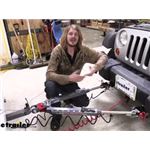
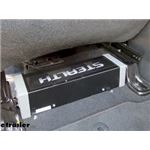
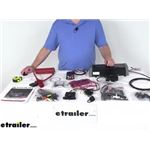

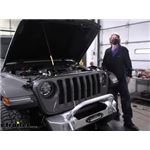
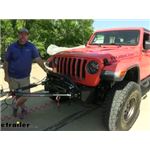


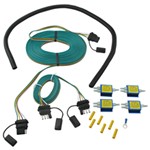
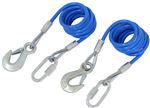
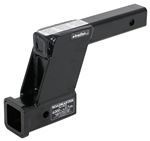



































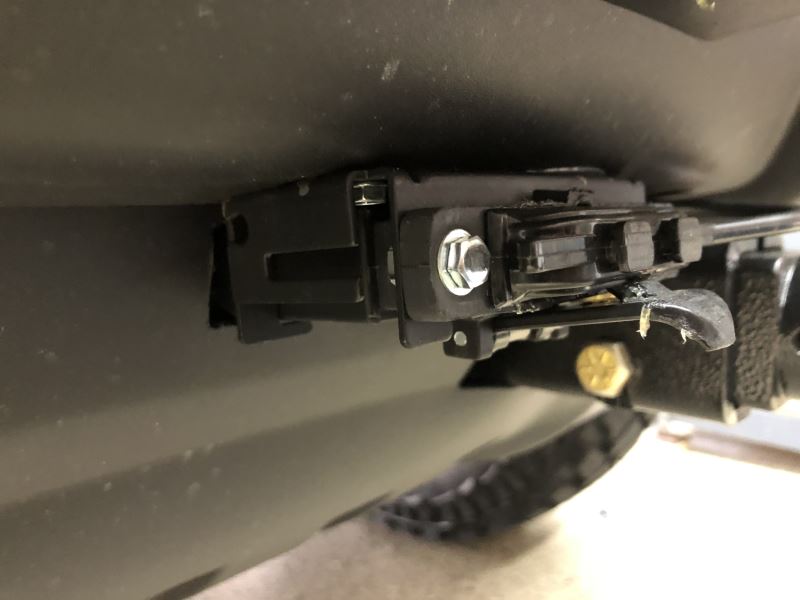

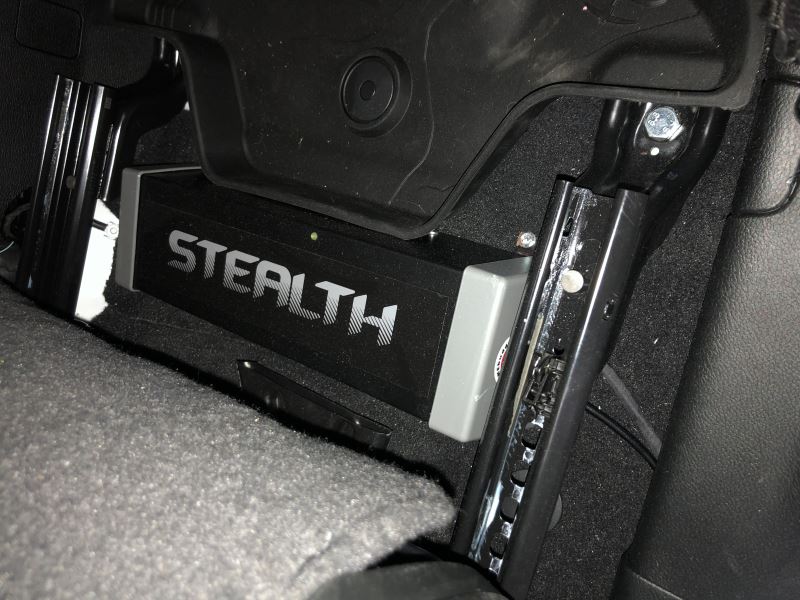
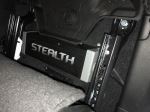
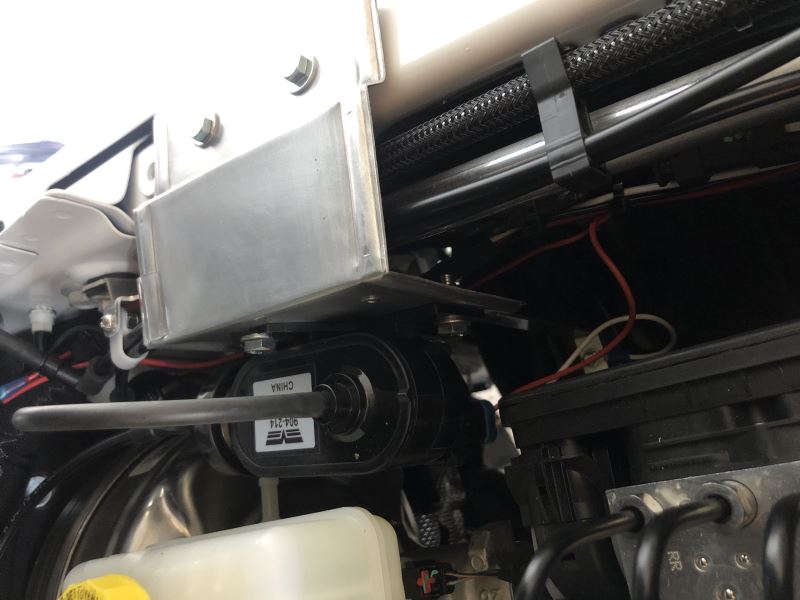
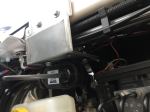
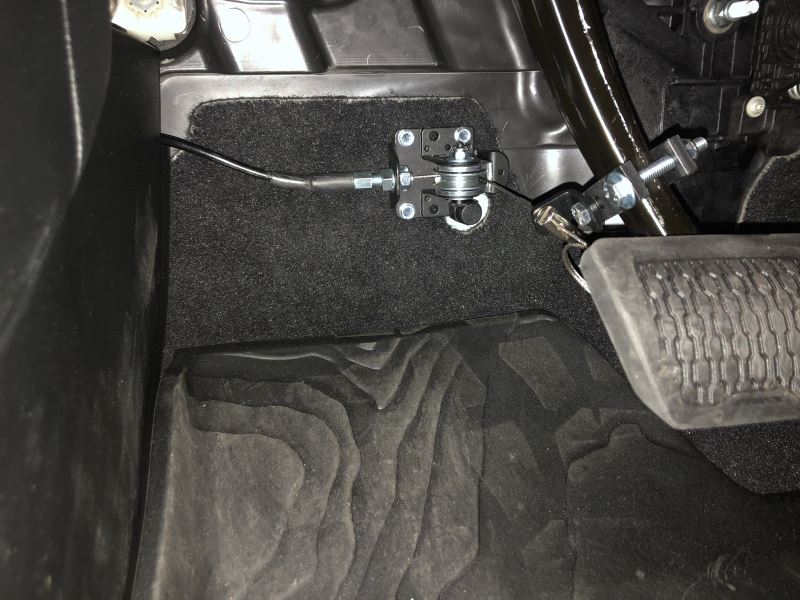


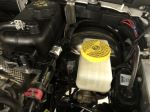







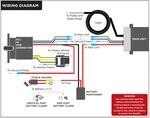



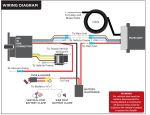
Sam J.
4/15/2023
Using this set up could not be easier. The only maintenance needed is keeping the connectors clean and refreshing the terminal grease. Operating is true plug and play though I always test the setup before driving off in tow. We did have a suspected issue with the original cable between the RV and vehicle I contacted support and they said it might be a bad connector or might just need to be cleaned. But well send you a cable just in case. I couldnt be happy with their response. It has worked since. I do wish the vacuum booster pump included with a kit drew more vacuum. It does indeed charge the brake booster, although I suspect not quite at the same high levels as the vehicle does one operating normally. I am certain the brakes are being applied with the booster, and the breaking effort seems balanced between the RV and the vehicle towed. I contacted engineering through customer support about this as well, they assured me that the design pressure was to specifications.